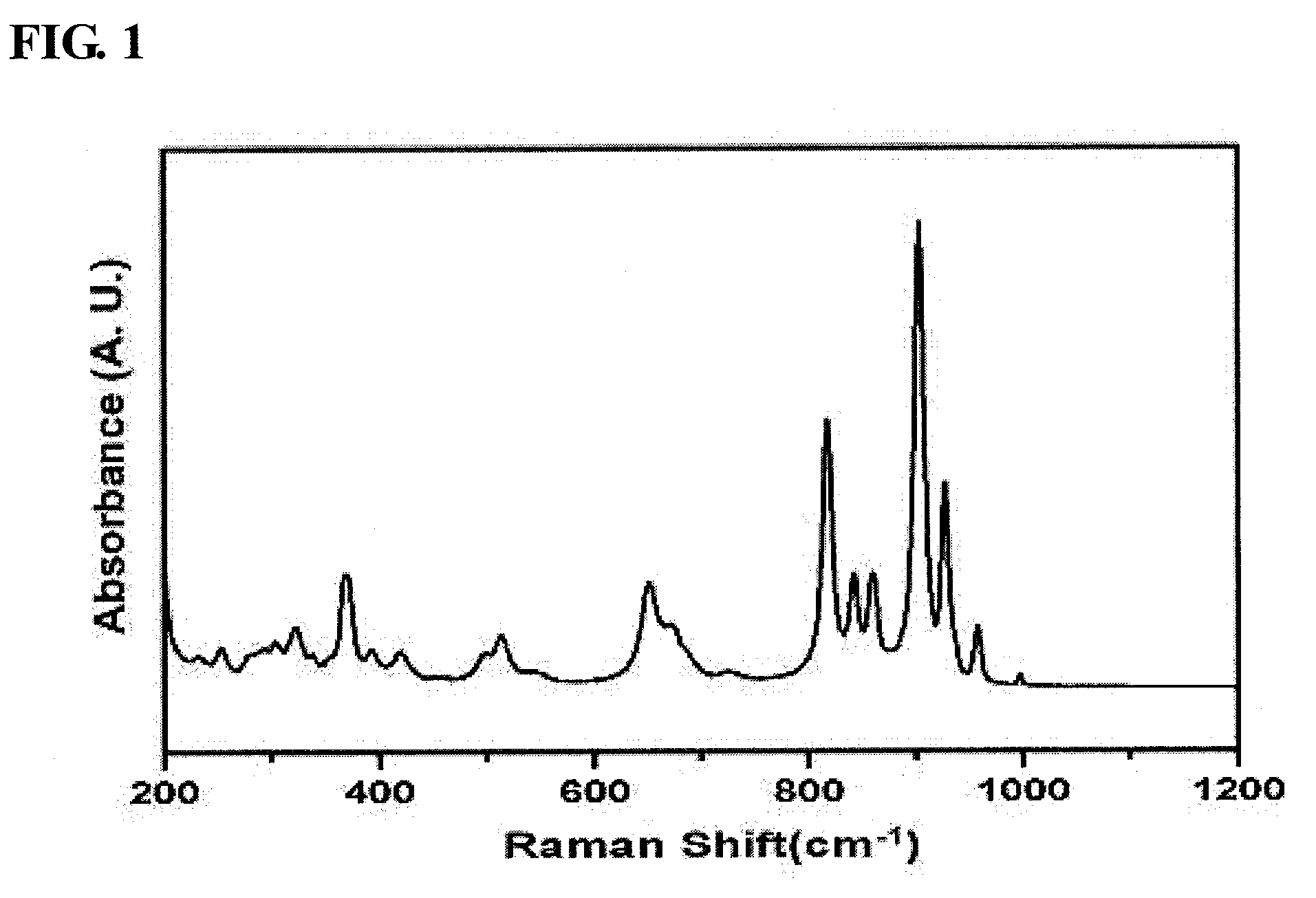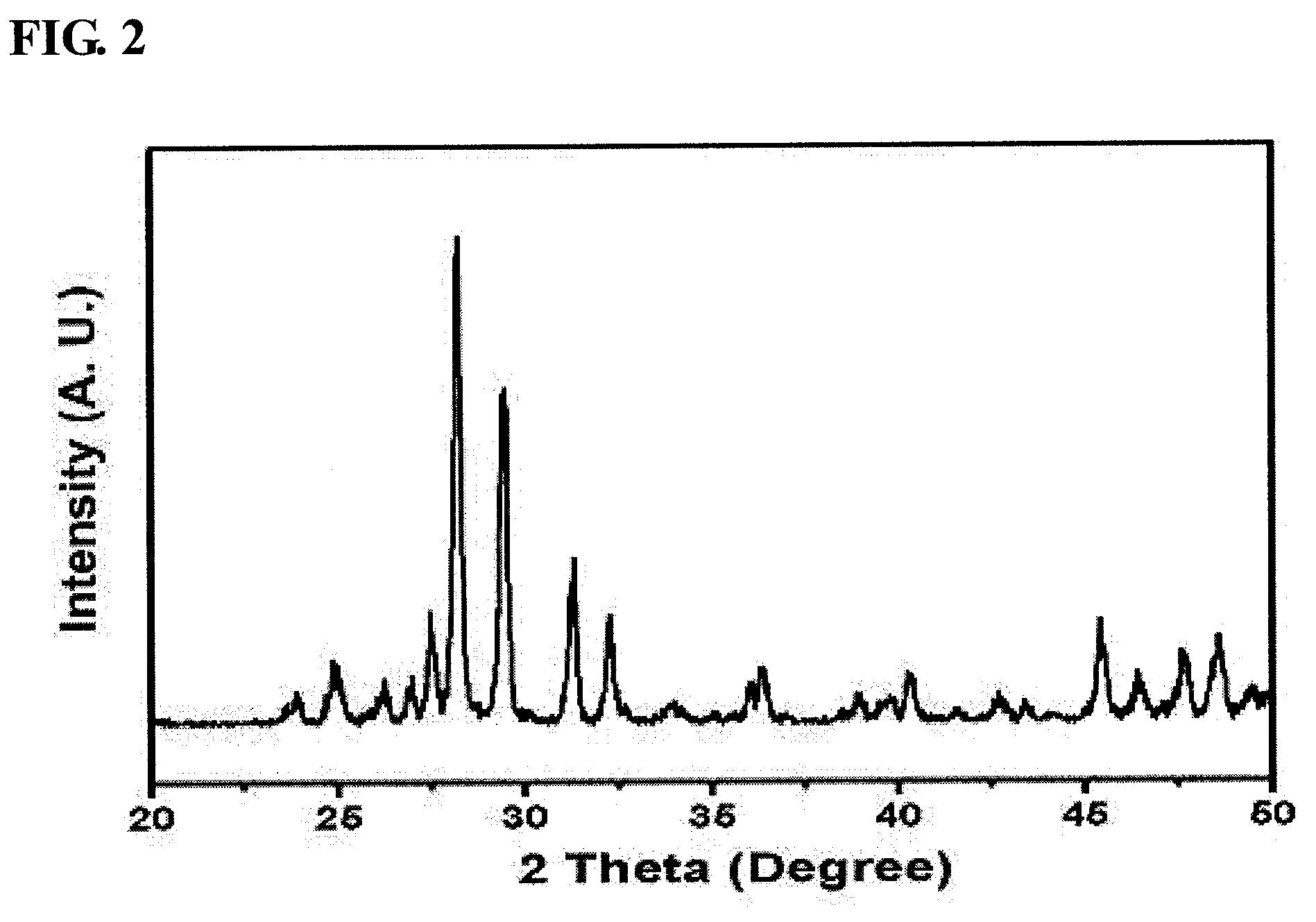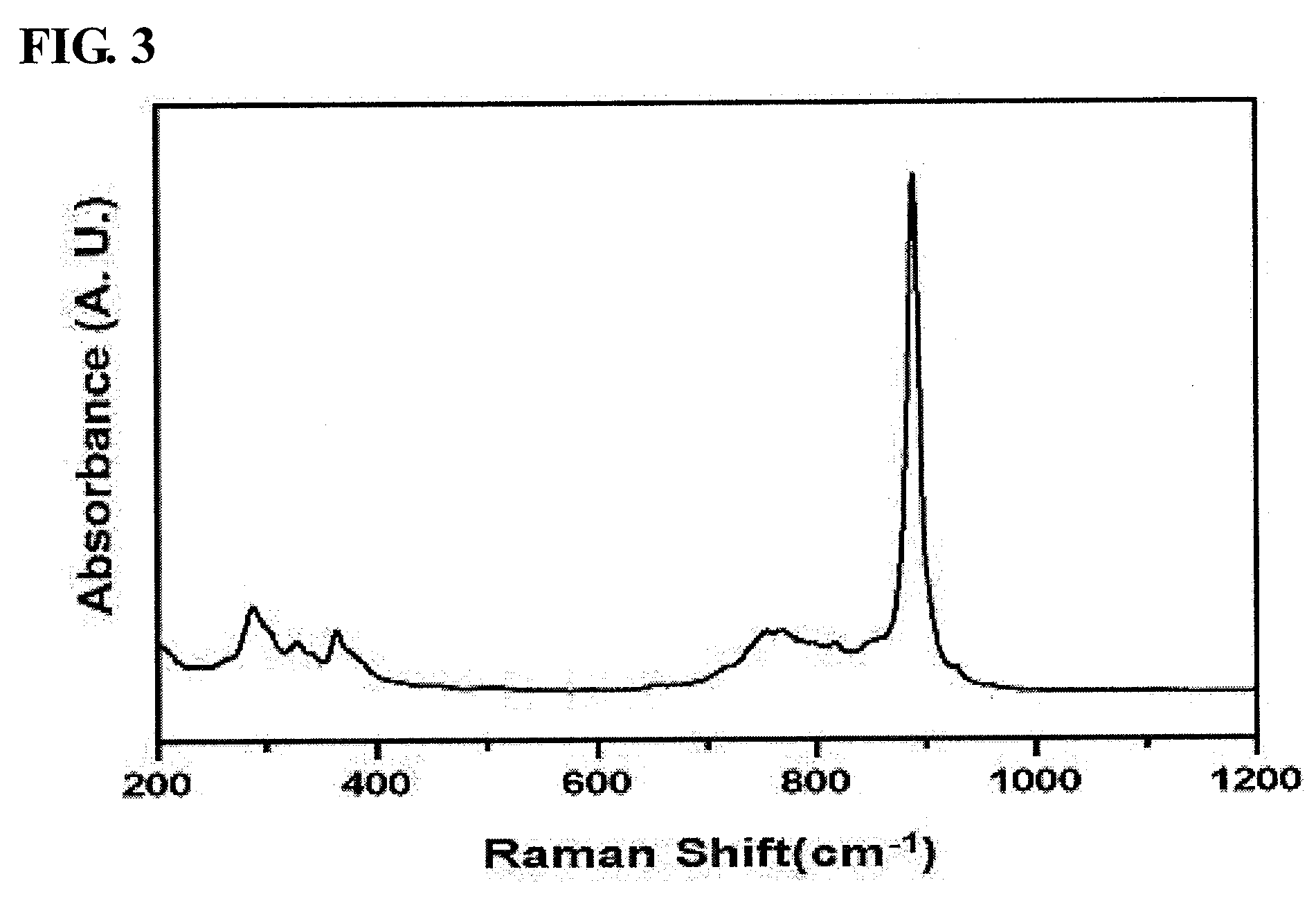Bismuth molybdate-based catalysts, method of preparing thereof and method of preparing 1,3-butadiene using thereof
a technology of molybdate and catalyst, which is applied in the field of preparation of bismuth molybdate-based catalyst, and the preparation of 1,3butadiene using the same, can solve the problems of poor thermodynamic properties, low yield, and change of catalytic activity, and achieve simple constituents and synthesis routes, high activity, and the effect of ensuring reproducibility
- Summary
- Abstract
- Description
- Claims
- Application Information
AI Technical Summary
Benefits of technology
Problems solved by technology
Method used
Image
Examples
preparation example 1
Selection of Precursors and Solvents for Preparing Bismuth Molybdate Catalyst
[0052]As a bismuth precursor, bismuth nitrate (Bi(NO3)35H2O), and as a molybdenum precursor, ammonium molybdate ((NH4)6Mo7O244H2O) were used. Ammonium molybdate was dissolved in distilled water, whereas bismuth nitrate was dissolved in a strong acidic solution. Thus, bismuth nitrate was dissolved in nitric acid solution-containing distilled water.
[0053]While the bismuth nitrate solution was added to the ammonium molybdate solution, an appropriate amount of ammonia solution was further added to control the pH upon precipitation. As such, in order to accurately maintain the desired pH, the bismuth nitrate solution and the ammonia solution were added in droplets to the ammonium molybdate solution. Further, upon precipitation, to obtain a sample having a uniform composition, the solution was thoroughly stirred using a magnetic stirrer.
preparation example 2
Preparation of Pure-Phase α-Bismuth Molybdate (Bi2Mo3O12) Catalyst
[0054]In order to prepare pure-phase α-bismuth molybdate, 5.9 g of ammonium molybdate was dissolved in distilled water (60 ml) and was then stirred. Separately, 10.81 g of bismuth nitrate was added to nitric acid-containing distilled water (20 ml), and was then dissolved while being stirred. After the complete dissolution of bismuth was confirmed, the bismuth solution was added in droplets to the molybdate solution. As such, for pH control, a 3 M ammonia solution was added in droplets to adjust the pH to 1.5.
[0055]The mixture solution thus obtained was stirred at room temperature for 1 hour using a magnetic stirrer, after which the precipitated solution was filtered using a reduced-pressure filter to thus obtain a solid sample, which was then dried at 100° C. for 24 hours. The produced solid catalyst was placed in an electric furnace, and then thermal treatment was performed while a temperature of 475° C. was maintain...
preparation example 3
Preparation of Pure-Phase β-Bismuth Molybdate (Bi2Mo2O9)Catalyst
[0056]In order to prepare pure-phase β-bismuth molybdate, 4.68 g of ammonium molybdate was dissolved in distilled water (60 ml) and was then stirred. Separately, 12.87 g of bismuth nitrate was added to nitric acid-containing distilled water (20 ml), and was then dissolved while being stirred. After the complete dissolution of bismuth was confirmed, the bismuth solution was added in droplets to the molybdate solution. As such, for pH control, a 3 M ammonia solution was added in droplets to adjust the pH to 5.
[0057]This mixture solution was stirred at room temperature for 1 hour using a magnetic stirrer, after which the precipitated solution was filtered using a reduced-pressure filter to thus obtain a solid sample, which was then dried at 100° C. for 24 hours. The produced solid catalyst was placed in an electric furnace, and then thermal treatment was performed while a temperature of 475° C. was maintained, thus prepari...
PUM
| Property | Measurement | Unit |
|---|---|---|
| wt % | aaaaa | aaaaa |
| wt % | aaaaa | aaaaa |
| wt % | aaaaa | aaaaa |
Abstract
Description
Claims
Application Information
 Login to View More
Login to View More - R&D
- Intellectual Property
- Life Sciences
- Materials
- Tech Scout
- Unparalleled Data Quality
- Higher Quality Content
- 60% Fewer Hallucinations
Browse by: Latest US Patents, China's latest patents, Technical Efficacy Thesaurus, Application Domain, Technology Topic, Popular Technical Reports.
© 2025 PatSnap. All rights reserved.Legal|Privacy policy|Modern Slavery Act Transparency Statement|Sitemap|About US| Contact US: help@patsnap.com



